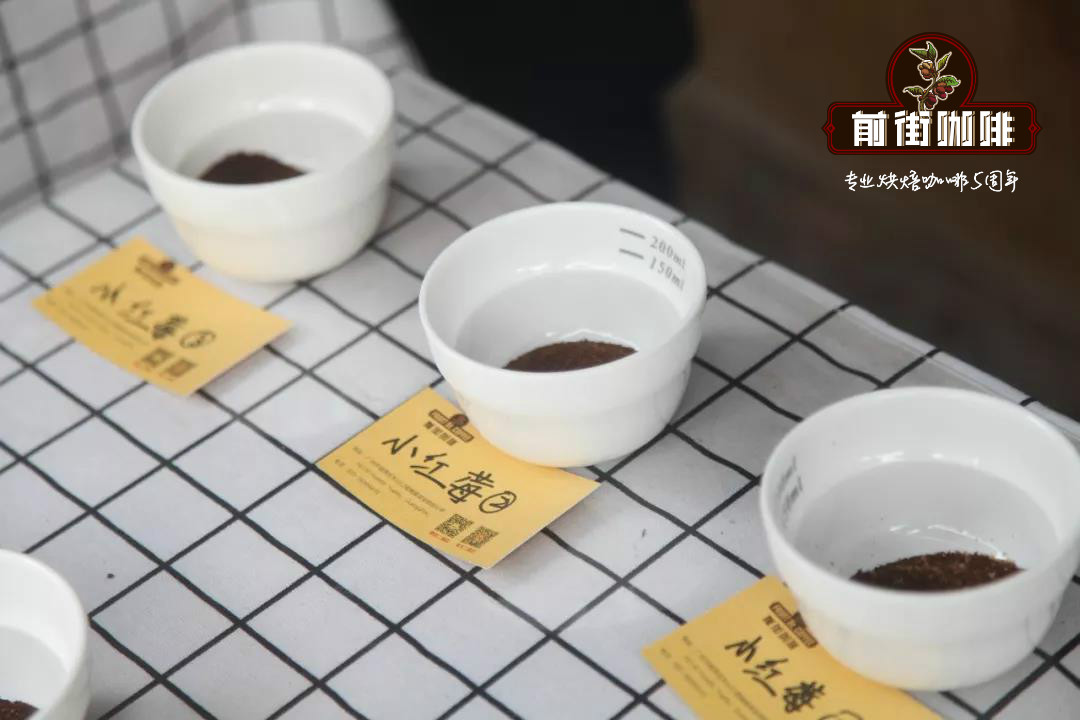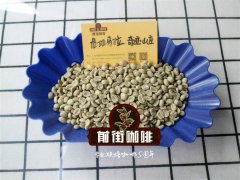Kenya AB Coffee Bean introduction and Flavor description Kenya AB Cranberry tastes good

Professional coffee knowledge exchange More coffee bean information Please pay attention to coffee workshop (Weixin Official Accounts cafe_style)
KenyaAB Kiambu Gitwe
Kenya AB Comatina Cranberries
Production area: Kiambu
Microregion: Gitwe
Soil: volcanic clay
Altitude: 1400 m-1800 m
Varieties: L-28, SL-34, Ruiru 11
Treatment: Kenyan 72 hour wash
01 |Production area
Kenya
Kenya is located in eastern Africa, adjacent to Ethiopia, the source of coffee. Although the soil was fertile, coffee was first grown in the country with the introduction of Bourbon (also known as the French mission) from Brazil in 1893; like the story of "go left, go right," coffee did not move inland south but north across the Red Sea. After hundreds of years of spreading, settling and mutating around the world, they returned home to Africa's Great Rift Valley.
Kenya is one of the major coffee producing countries, with more than six million people engaged in the coffee industry, mostly in the form of a combination of small farmers, wet processing plants and cooperatives. Kenya coffee is mainly treated by washing method. Coffee trees are mostly planted in mountainous areas with an altitude of 1400 - 2000 meters. The producing areas include Ruiri, Thika, Kirinyaga and Mt. Kenya West, Nyeri, Kiambu and Muranga. Kenya's famous producing areas are mostly concentrated in the central part, such as Nyeri, Kiambu, Kirinyaga and the western mountains near Uganda (Nakuru, Bungoma, Kitale, etc.)
Kiambu region description:
Altitude: 1500-2200m
Harvest: first harvest period: October-December, second harvest period: June-August
Varieties: SL-28, SL-34, Batian
Coffee cultivation in Kenya
Coffee farms are mostly small-scale operations producing hundreds of kilograms a year. They will decide to sell the fruit to a nearby coffee factory based on the distance and purchase price. Farmers own small plots of land, often measured in terms of the total number of trees on a plot, which means producers often have more autonomy to strategically harvest fresh coffee and ship the most ripe fresh coffee to local factories (washing plants). Plants generally have abundant water resources for delicate washing, including long periods of soaking coffee beans in fresh water to consolidate the characteristic Kenyan flavor characteristics.
The main varieties in Kenya are SL28 and SL34. It was developed and named by Scott Laboratories in 1930. According to SL Laboratory botanists, SL28 and SL34 are genetic variants. SL28 has a mixed lineage of French missionaries, mocha and Yemeni tibica. SL28 was bred to produce high quality, pest resistant coffee beans in large quantities. Although SL28 did not yield as much as expected, the copper-leaf color and broad bean shape had a great sweetness, balance and complexity, with prominent citrus and dark plum characters. SL34 and SL28 taste similar, except for complex acid, and a good sweet finish, the taste is heavier, richer and cleaner than SL28. SL34 has French missionary, bourbon, and more Tibica pedigree. The beans are similar in appearance to SL28, but are better able to adapt to sudden heavy rain. These are two important varieties that lead us to the unique Kenyan coffee bean. Currently popular varieties in Kenya include Ruiri 11, which has high disease resistance but slightly inferior taste, Batian, K7 and Kent, which have high drought resistance.
02 |treatment
Kenyan 72 hour wash
Kenyan coffee is famous for its rich layering and clean taste. Its unique Kenyan washing method, after two washing and fermentation procedures, commonly known as "double fermentation", is a rather complicated but delicate green bean treatment method; this treatment method is more time-consuming and water consuming than the general washing method, so Kenya coffee is more expensive, but it is also an indispensable method to create Kenya coffee's unique sour flavor and clean taste.
First washing and fermentation
After harvesting coffee cherries, they will first pass through the proportion of water flow to pick beans; the principle is to use the density and quality difference of coffee fruits themselves to make selection; coffee beans with high density (heavy quality) will sink into water, while coffee beans with low density will float. Ripe, high-quality coffee fruits have a high density and are selected for further processing.
After selecting good quality and ripe fruits, peel them off and soak them in water to ferment the pectin mucus attached to the outer layer of raw beans. Pectin has natural sugars and alcohols that are crucial to coffee sweetness development, acidity and overall flavor.
Fermentation time up to 24 hours, fermentation can remove 80- 90% of pectin, leaving only the flavor of coffee beans.
Second washing and fermentation
Then enter the second washing fermentation process. After the coffee beans in the previous stage are cleaned, they are soaked in water for 12- 24 hours. This process increases protein and amino acids, and the acidity of the coffee bean thus creates a complex, delicate texture.
Finally, remove all remaining pectin and move the beans to a high shelf for sun drying, depending on the weather conditions, usually about 5- 10 days to complete.
03 |green bean analysis
The varieties of [Kenya AB Comatina Cranberry] are SL-28, SL-34 and Ruiru 11. Great sweetness, balance and complexity of flavors, with distinct citrus and dark plum characters.
Difference between Kenya AB and Kenya AA
Kenya strictly controls the quality of coffee, which is divided into AA, AB, C, E, PB, TT, T, ML and MH according to size and shape. These grades mainly distinguish the shape and size of beans, but do not represent the quality of beans. Many people believe that larger beans contain more fat that produces coffee aroma, and because of this, larger beans are more expensive on the market. AA is 17 and 18 orders, AB is 15 and 16 orders.
In the same level of beans, the highest level for the manor beans, followed by "+", and then the general AA, AB classification comparison AA, C class is smaller beans, E class is a large elephant beans, TT, T, ML, MH is the local will see the flow of beans.
As for quality differentiation, Kenya uses a numerical grading system to distinguish coffee quality, but this numerical grading system is not well publicized, so few people know about it. Therefore, the classification is still based on the grain size first, and the PB class of different shapes is about AA, but if it is the manor class or + class, it will advance two or one level in the class. For example, AB manor beans are about AA+ and PB+. Flavor ratings are TOP, PLUS, FAQ, FAQ-"Fair to Average Quality" There are some slight blemishes, but they do not affect the flavor.
04 |baking analysis
This coffee has relatively small particles, medium density and low moisture content. The baking target is light medium baking, unlike other Kenyan light baking, this cranberry uses light medium baking to reduce the intensity of sourness, improve texture and balance, and overall appear sweeter and juicier.
In the first batch of baking, the lower bean temperature is relatively high, the temperature of the beans is 200 degrees, and the fire is relatively large. In the baking process, it was found that the altitude of this bean was relatively not high, and the bean quality was slightly soft, so the baking method of gradually reducing the fire and steadily climbing was adopted. When the beans entered the yellowing point, dehydration was completed, and the first explosion precursor was adjusted to avoid burning the bean surface, and the explosion time was slightly prolonged, so as to increase the caramelization reaction time and improve the texture and balance of flavor.
Baking machine Yangjia 600g semi-straight fire
The oven temperature was raised to 200 ℃ and the oven was put into the oven. After the damper was opened for 3, 30s, the fire power was adjusted to 150 ℃. The damper remained unchanged. The temperature was returned to 1 '38 ". The fire power was maintained. When the temperature was 5' 16", the bean table turned yellow and the grass smell disappeared completely. The dehydration stage was entered. The fire power was reduced to 120 ℃ and the damper was adjusted to 4.
7 ′ 05 ′ ′ dehydration completed, the fire to 80 degrees, 8 ′ 00 "when the beans appear ugly beard wrinkles and black stripes, toast flavor obviously changed to coffee aroma, can be defined as a prelude to explosion, this time to hear a clear explosion point sound, to 8 ′ 28" to start an explosion, reduce the fire to 50 degrees, throttle fully open 5 (adjust the fire to be very careful, not small to no explosion sound), after an explosion to develop 2 ′ 00 ", 193 degrees under the pan.
This Kenyan coffee bean has a balanced texture, with a clear and soft sour taste and rich citrus, grapefruit and berry flavors.
05 |brewing analysis
Recommended cooking methods: siphon, hand brewing
Abrasion: 3.5 (Japan Kofuji R440)
V60 filter cup, 15 grams of powder, water temperature 90 degrees, grinding 3.5, water powder ratio close to 1:15
35 grams of water stewed for 30s
Staging: water injection to 108ml, water cut off slowly to 225ml,
30-108-225.
Other suggestions for trickle-filtration extraction:
Normal pressure, recommended abrasiveness of 3.5-4/water temperature 91°C
Aile pressure, recommended 2.5 grind, water temperature 89°C
Hand washing: 3.5 grinding degree, water temperature 89°C
Sweetness: † † †
Acidity: ☆☆
Bitterness: ☆
Related recommendations: hand brewed coffee really good to drink? Why does coffee smell better than coffee?
Important Notice :
前街咖啡 FrontStreet Coffee has moved to new addredd:
FrontStreet Coffee Address: 315,Donghua East Road,GuangZhou
Tel:020 38364473
- Prev

Flavor characteristics of Panamanian Rosa Coffee Bean introduction to the classification of manors in Panama Rosa coffee producing area
Professional coffee knowledge exchange more coffee bean information please follow the coffee workshop (Wechat official account cafe_style) today is a special boutique coffee, the name of this kind of coffee is Geisha, the English name Raoxia happens to mean geisha, so this boutique coffee is also
- Next

Introduction and flavor description of Guatemalan Miracle Villa Coffee beans
Professional coffee knowledge exchange more coffee bean information please follow the coffee workshop (Wechat official account cafe_style) GUATEMALA MILAVALLE LA DEMOCRACIA [Guatemala Miracle Villa Green Vina] Origin: Guatemala Vivetnam Fruit Bean seed: Bourbon / Kaduai / Kaddura Manor: miracle Villa altitude: 1500 meters above sea level: washing picking place
Related
- Detailed explanation of Jadeite planting Land in Panamanian Jadeite Manor introduction to the grading system of Jadeite competitive bidding, Red bid, Green bid and Rose Summer
- Story of Coffee planting in Brenka region of Costa Rica Stonehenge Manor anaerobic heavy honey treatment of flavor mouth
- What's on the barrel of Blue Mountain Coffee beans?
- Can American coffee also pull flowers? How to use hot American style to pull out a good-looking pattern?
- Can you make a cold extract with coffee beans? What is the right proportion for cold-extracted coffee formula?
- Indonesian PWN Gold Mandrine Coffee Origin Features Flavor How to Chong? Mandolin coffee is American.
- A brief introduction to the flavor characteristics of Brazilian yellow bourbon coffee beans
- What is the effect of different water quality on the flavor of cold-extracted coffee? What kind of water is best for brewing coffee?
- Why do you think of Rose Summer whenever you mention Panamanian coffee?
- Introduction to the characteristics of authentic blue mountain coffee bean producing areas? What is the CIB Coffee Authority in Jamaica?

